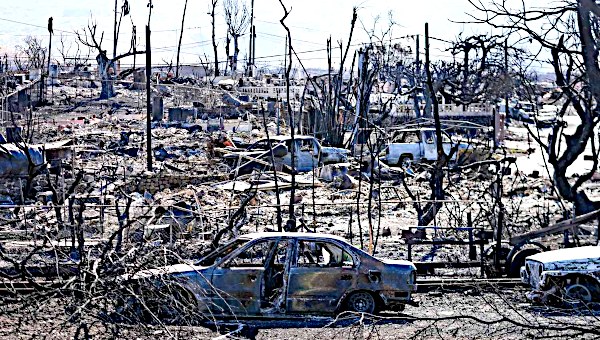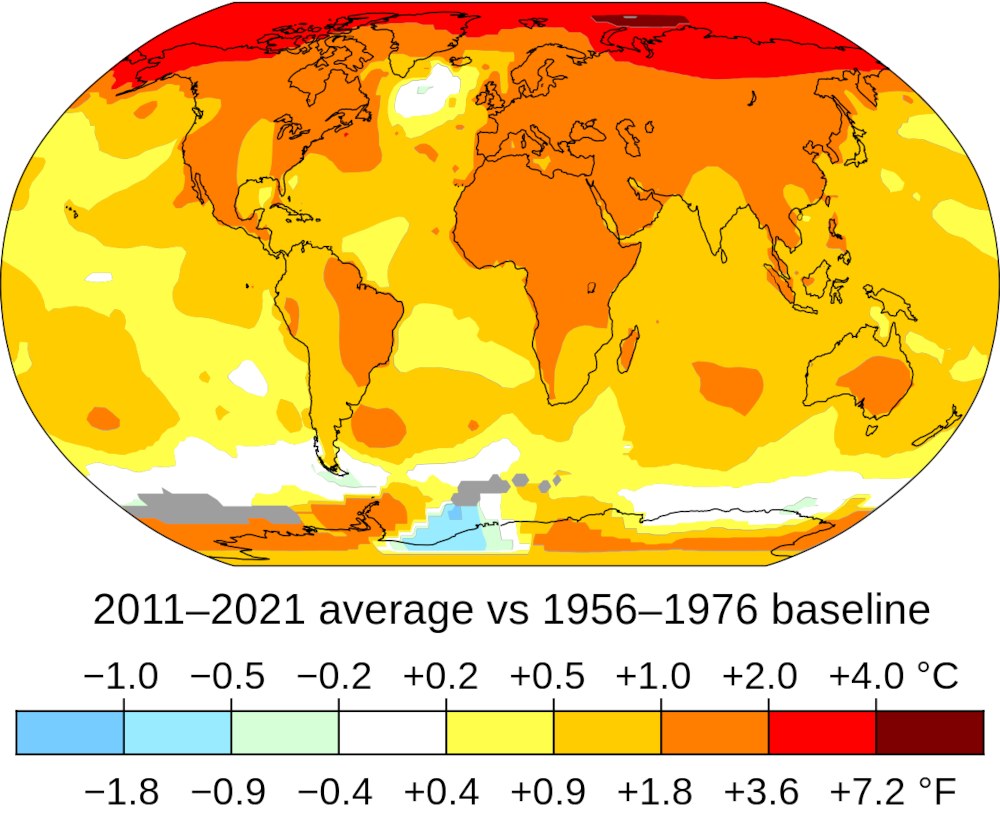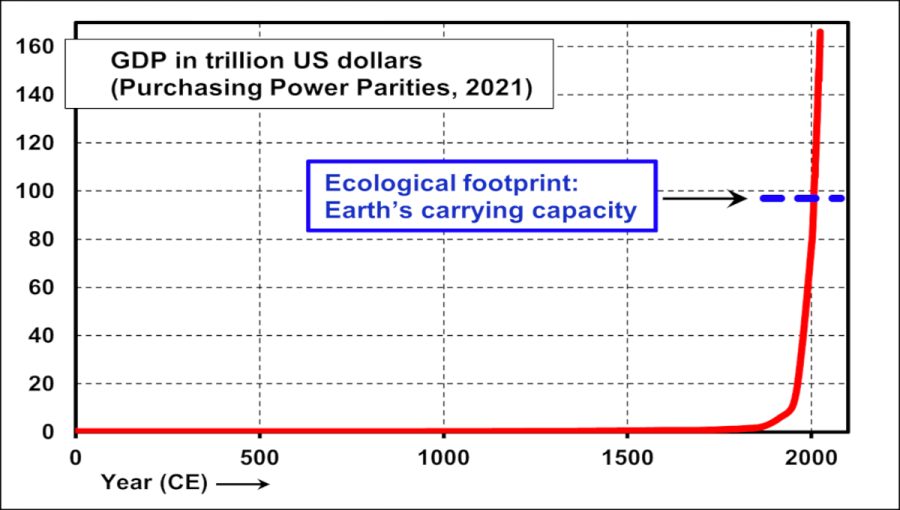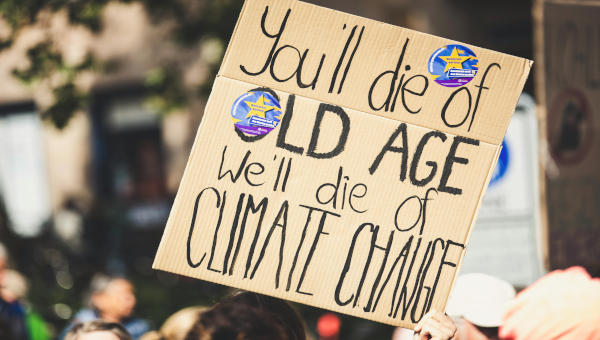Climate Change, Record Temperatures, and Human Fatalities
How many people are dying due to climate change? How does climate change cause death, and what are some of the omissions, deceptions, and confusions about fossil fuels, climate change, and mortality?
In the US, climate-related deaths are narrowly classified as heat-related, so simple google searches to this question come up with 106 deaths for 2022. However, vector-borne diseases that proliferate due to heat, like malaria, dengue, zika, also account for 700,000 deaths/year. George Monbiot wrote that the burning of Indonesia’s tropical forests for biofuels (as an alternative to coal) from sugar cane/palm oil plantations, caused air pollution possibly leading to 15,000 infant deaths. And the US oil war for fossil fuels and the UN Iraqi oil-for-food program led to millions of deaths, including an estimated 5,000,000 children.
In 2021 the Guardian reported that extreme temperatures kill 5 million people/year, and that deaths were on the rise. There is also the question about reporting accuracy and the difficulty of estimation. The World Mortality Database found that the number of people dying in the 2015 Egyptian heat wave was 20,000, not the reported 61, and that in 2022, heat waves in Europe killed more than 61,600 people. Two decades ago, 71,000 excess deaths were recorded in Europe from the summer heat wave. This was not enough to jar any fundamental changes.
On July 13, 2023, James Hansen wrote that the Earth is heading into a new frontier of global climate in which “the moisture extremes are more important than the temperature extremes.” It is unclear how this affects ground-level humidity and human life; Hansen writes that “higher absolute humidity and deeper penetration of moist convection cause a larger portion of the rainfall to occur in intense thunderstorms.”
Rarely mentioned in the news are the inevitable, unpreventable deaths due to ‘wet-bulb’ conditions that occur when relative humidity is above 95% and temperatures are at least 31.1°C (88°F), a wet-bulb temperature of 35°C. When the wet-bulb temperature reaches 35°C, it crosses a threshold at which humans have difficulty losing internal body heat to cool themselves. But research shows that even wet-bulb temperatures lower than 35°C can be fatal. That was the case in 2010, when Russia experienced a deadly heat wave, where wet-bulb temperatures didn’t pass 28°C. In Iran, “a combination of heat and humidity this week pushed the heat index at the Persian Gulf International Airport to 152° degrees Fahrenheit, with a dew point above 90°.” That’s close to the limit of what the human body can survive, but there is no information about fatalities.

The Human and Ecological Impacts of Warming
The Global Humanitarian Forum, under Kofi Annan, only lasted between 2007-2010 when the Swiss Federal Department of Foreign Affairs announced that it was over-indebted and needed to cease its activity. It issued the Human Impact Report: Climate Change to the 2009 Copenhagen climate meeting, stating that this was only the beginning of addressing the human impact of climate change. The Report estimated that since 1991, developing countries experienced 99% of the casualties, and that with the current global policies projected to result in about 2.7°C warming above pre-industrial levels, there was an urgent need to address Loss and Damage.
“If we do not reverse current trends by close to 2020, however, we may have failed. Global warming will pass the widely acknowledged danger level of two degrees, since there is an approximately 20 year delay between emission reductions and the halting of their warming effect.”
This is one of many facts omitted from the carbon budget. As of 2009, the Report indicated that 315,000 lives/year were lost due to climate change, principally due to malnutrition, diarrhea, malaria, and weather-related disasters brought about by climate change. It reported that women account for two-thirds of the world’s poor. The Report quoted many poor, uneducated people on the ground who were well aware of climate change and its consequences.
It is well-worth the time to read the Report and to recall the failures of Copenhagen 2009 as reported by Sara Flounders: “with more than 15,000 participants from 192 countries, including more than 100 heads of state, as well as 100,000 demonstrators in the streets – it is important to ask: How is it possible that the worst polluter of carbon dioxide and other toxic emissions on the planet is not a focus of any conference discussion or proposed restrictions? …[T]he Pentagon has a blanket exemption in all international climate agreements.”1 This exemption remained at the 2015 Paris COP meeting.
Measuring Climate Change in Number of Deaths
What if the cost of climate change was measured in terms of human life and not money and that using the tools of math, measurement, statistics, algorithms, search engines, could determine deaths caused by each increase in temperature or greenhouse gas (GHG) concentration? For example, people could find out how many deaths a transatlantic flight cost (aviation is exempt under Kyoto); how many deaths does a NATO ‘mission’ or wargame cost (military is exempt under Kyoto); how many deaths does a ship carrying steel, or transporting oranges cause (shipping is exempt under Kyoto), or eating meat and its related emissions from methane, deforestation, transportation? How many deaths does mining cobalt for electronic vehicles and electronic devices cost? See this shocking reports in the recent book, Cobalt Red, about US, Belgian, Chinese mining in the Congo.
What if human death were taken seriously, and centrally? At the beginning of the COVID epidemic, drastic measures were implemented: investment in pharmaceutical research, moratorium on non-essential production, on international aviation, moratorium on debts. But soon after there was utter, unfathomable undoing, backtracking. Since the pandemic began, a “new billionaire [has been] minted every 26 hours, as inequality contributes to the death of one person every four seconds.”
The famous hockey stick graph depicts the gradual upward slope since the beginning of the industrial revolution around 1800, and then steep, sudden climbs from 1990, and the graphs can also be used to illustrate disappearing forests, corals, wetlands, birds, insects, and mammals. However, there are no graphs on human fatalities. The iconic climate images are of disappearing bears, or entire ecosystems (corals), or at times disappearing traditional societies. The disaster of climate change is depicted as an abstraction like the ‘end of civilization as we know it’. Monetizing the ‘cost’ of war or the cost of climate change doesn’t get at the death of an entire human being, which many people know and feel deeply about – and doubtlessly know the causes: the worldwide response to seeing the lifeless body of toddler Alan (Aylan) Kurdi who drowned in the Mediterranean, the worldwide response to the death of George Floyd. Daniel Ellsberg expresses his own shock and incredulity about the casual carelessness of the military and government people he interviewed – their indifference about the enormous possible deaths from the use of nuclear weapons.
The Climate System Today
What are essential key facts about the climate system itself? Based on the paleoclimate record, James Hansen found that 350 parts per million (PPM) of CO2 in the atmosphere was the turning point of ice-formation on the planet, and that additional greenhouse gas in the atmosphere would cause the melting of all Earth’s ice. The rate of change is determined by positive and negative feedbacks and by the rate of adding additional CO2 to the atmosphere. At this time, the ever-increasing rate is unprecedented, making it difficult to predict how long it will take for all Earth’s ice to melt. Humans never lived under this condition. The entire pre-industrial level was around 275 parts per million. In May 2023, the monthly mean level was 424 ppm of CO2.2 That does not include other greenhouse gases which significantly increase global heating forcing to an effective 550 ppm: water vapor, methane, and nitrous oxide.
A crucial determinant is the increasing potency of positive feedbacks, and the deterioration of the Earth’s capacity to draw down CO2 through absorption by forests (e.g. fires, deforestation) and soils (e.g. loss of topsoil, desiccation and sterilization). Each additional human-produced increment of CO2 generates secondary amplifying feedbacks. It is perhaps comparable to the impacts of COVID-19 on the healthcare system, in which a cascade of secondary effects causes a general system breakdown and death.
Much current prognostication about climate solutions confuses and deceives: the target dates and baseline dates for reaching ‘net zero’ are arbitrary and inconsistent from country to country. As explained above, it is unpredictable how much feedback any quantity of human-produced CO2 will generate. Further, representing climate change with average global surface temperature vastly oversimplifies the much more significant and complex impact of contrasting regional differences (e.g. the decreasing difference between the tropics and the Arctic), the interactions of ocean layers and circulation (regional, hemispheric, and global circulation; the layering of salt water and fresh water), the effects of atmospheric circulation (e.g. climate effects on troposphere and stratosphere), the differences between surface land and surface sea temperatures.

The demands for just solutions and sustainability are crucial, but they do not in themselves reflect the urgent human life emergency co-opted by delay, distraction, deception. Even the most minute efforts are often lost to follow-up or treated as pilot projects. Immediate emission reductions do not require switching to renewables or leaving fossil fuels in the ground – high-emitting non-essential activities must be eliminated immediately or substantially reduced until the effective concentration of greenhouse gases is brought down to 350 ppm.
It’s clear that immense areas of the earth are becoming uninhabitable. The current unprecedented weather disasters are happening at average temperatures lower than 1.5°C and reflect concentrations far lower than current 424 ppm due to inertia in the climate system. Basing policy on the notion of a carbon budget, with some mainstream neoclassical economists, the key defenders of capitalist economics, even believing that a 6°C rise in temperature is safe for Americans as work can be done in air conditioned buildings. This contention invites the label of a crime against global humanity and bears comparability to Ellsberg’s revelations about the nuclear war planners.3
From the perspective of preventing death, the whole climate political picture requires urgent action beyond divestment, keeping fossil fuels in the ground, and renewables. It must include open borders, eliminating the military and the entire arms industry, eliminating third-world debt and making reparations domestically and internationally, funding fire departments and first responders, building up grain reserves, replacing factory farming with regional agriculture and decision-making. And, actually talking and listening to people, not just polls. This is a matter of life and death for the majority population, and cannot avoid breaking with the capitalist economic system itself. •
Endnotes
- See the research of Neta C. Crawford, author of The Pentagon, Climate Change, and initiator of the ‘Costs of War’ project at Brown University. She writes on the military exemption under Kyoto, the emissions of both the military itself and the industrial production of military equipment, and America’s long history of scorched earth warfare such as defoliation in southeast Asia. There is also now the ominous military ‘security’ framing of climate change by the Pentagon.
- For example, it makes a great deal of difference in understanding the rapidity of climate change if the 1°C rise is simply measured from 1780, as if it takes several hundred years to increase temperature by 1°C. The World Meteorological Organization reported 0.2°C rise between 2001 and 2010 above the previous 1991-2000 average. This acceleration would seem to indicate that there is no chance of holding average temperature rise to 1.5°C. See: James Hansen, Storms of My Grandchildren: The truth about the coming climate catastrophe and our last chance to save humanity. New York: Bloomsbury, 2009.
- Steve Keen, The New Economics: a manifesto, Cambridge: Polity, 2022, pp. 112ff. This text is a sharp critique of the neoclassical economists and their dangerous misconceptions about economics and climate change.





